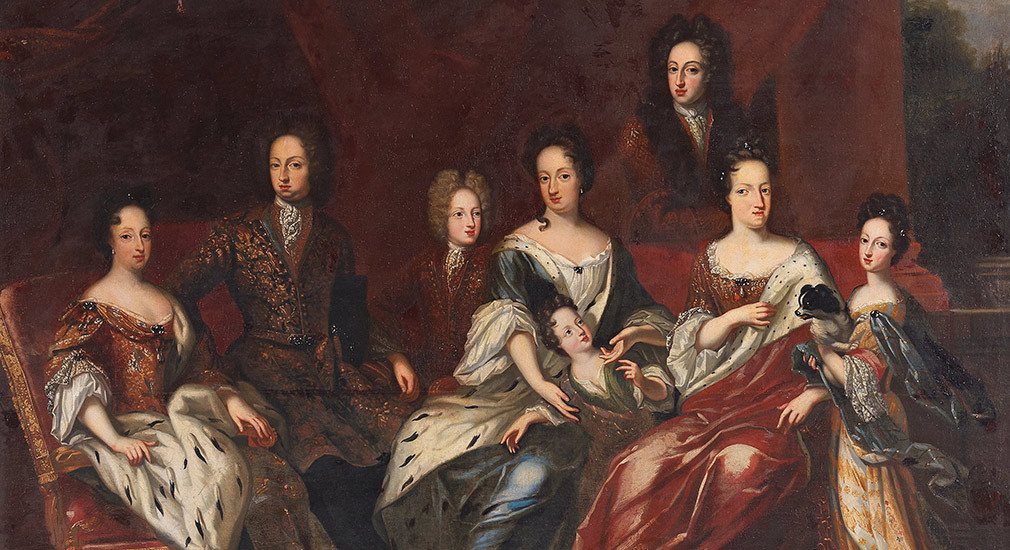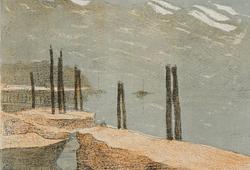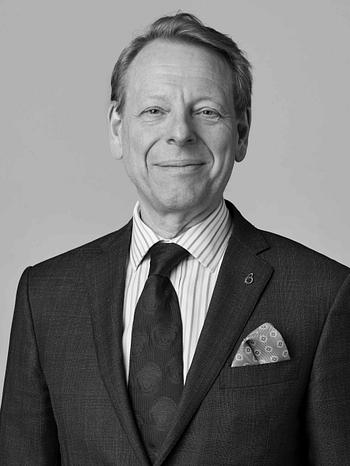David Klöcker Ehrenstrahl at Important Spring Sale

No. 382. David Klöcker Ehrenstrahl ”King Karl XI of Sweden with family”.
BUKOWSKIS IMPORTANT SPRING SALE
Viewing: May 29th – June 3rd at Berzelii Park 1, Stockholm
Open: Mon–Fri 11–18, Sat–Sun 11–17
Auction: June 4th at Arsenalsgatan 2, Stockholm
Read more about the sale >
Bukowskis is proud to present a work by David Klöcker Ehrenstrahl ”King Karl XI of Sweden”, at our Important Spring Sale, this spring’s major hammer auction. The painting will be sold on 4–5 June and will be available to view at Berzelii Park 1 in Stockholm.
Artist David Klöcker Ehrenstrahl was born in Hamburg in 1628, the son of a tailor. One of the earliest pieces of information we have about him today is that when he was eighteen he gained a post as a writer for the Swedish delegation at the peace conference in Osnabrück “for the sake of his beautiful handwriting”. It is also mentioned that from his childhood, he had greatly enjoyed drawing. However, it was mainly in the Netherlands that he first learned his craft, studying with animal painter Juriaen Jacobsz.
Following these studies, Ehrenstrahl accompanied field marshal Carl Gustaf Wrangel to Sweden and painted several portraits of him and his family. Through the intervention of Queen Dowager Maria Eleonora (of Brandenburg) he gained the opportunity to study in Italy and then travelled on to visit the French and the English courts. In Italy he spent time with colleagues among the Nordic artists and studied with da Cortona, and above all, he saw the works of art by the major Italian masters of the Renaissance, Titian and Veronese.
In Paris he noted how Louis XIV had surrounded himself with a large staff of artists and he paid careful attention to how the works of Lebrun and Mignard were created during this period of High Classicism in France. In England Charles II had just come to power and Ehrenstrahl was now strongly influenced by portrait artist Peter Lely who had come into fashion after Anthony van Dyck.
On his return to Sweden in 1660, Ehrenstrahl was thus full of inspiration from the countries that were setting the fashion. He had witnessed the latest trends in art on the continent, and the most expensive works being created in the courts of Europe, first-hand. Once in Sweden, he was appointed court painter to the young Queen Dowager Hedvig Eleonora, making him the foremost portrait artist of the Carolinien period ( (1654–1718). The large number of orders he now received meant bringing several assistants into his studio. Ehrenstrahl painted ceiling frescoes and his best known works include his paintings of members of the House of Palatinate-Zweibrücken, many of which were created to hang at Drottningholm Palace. In return he was ennobled in 1670 and took the name Ehrenstrahl.
With Tessin the Elder and Nicolaes Millich, Ehrenstrahl was responsible for the interior design of the rooms at Drottningholm Palace. In a suite of rooms with an ante-chamber, audience room and state bedchamber for the queen, Ehrenstahl’s frescoes and ceilings allegorically depicted the marriages of the Swedish royal family, the births that secured the line of descent, the upbringing of the royal princes and princesses and their moral behaviour. The same motif as the painting in the catalogue was displayed in Ulrika Eleonora’s state bedchamber at the palace.
Ehrenstrahl also became highly important as a teacher of a whole generation of artists who also came to work in Sweden, including Michael Dahl, Johan Richter and David von Krat. In art history he has been termed “the father of Swedish painting”.
Among all the artist’s famous hunting scenes, horses and dogs, portraits of generals and kings, this dynasty portrait by Ehrenstrahl is one of his most interesting works and was painted on the visit of Frederick (IV) of Holstein-Gottorp to the Swedish court. To the far left in the picture sits the Queen Dowager Hedvig Eleonora with her son King Karl XI standing beside her. Next to him are Crown Prince Karl (XII), Queen Ulrika Eleonora the elder, Princess Ulrika Eleonora, Frederick (IV) of Holstein-Gottorp and then his mother Duchess Frederica Amalia of Holstein-Gottorp and Princess Hedvig Sophia. Queen Hedvig Eleonora’s dogs are well-documented in numerous paintings by Ehrenstrahl and the two jumping on the floor are probably Don-Don and Turck while the miniature spaniel in the arms of Princess Hedvig Sophia is likely to be Nespelina.
The Queen Dowager was the sister of Duke Christian Albrecht of Holstein-Gottorp who sought to make his Duchy independent of Denmark and was therefore seeking support from Sweden. Christian Albrecht’s oldest son Frederick and Karl XI’s daughter Princess Hedvig Sophia became the subject of political speculations early on. Holstein-Gottorp was particularly keen on this dynastic link with Sweden and Frederick was therefore a frequent guest at the Swedish court in 1687–1693. Over time he raised the subject of marriage with the princess and was warmly encouraged by Queen Dowager Hedvig Eleonora. Once he succeeded his father as Duke in 1694, the marriage plans began to crystallise but the marriage was postponed due to the princess’ age at the time – she was merely 13. It was only once his cousin Karl XII had succeeded to the throne in 1697 that negotiations recommenced and in spring 1698 Frederick IV returned to Stockholm to finalise the marriage plans.
Queen Ulrika Eleonora the elder was the sister of Frederick IV’s mother Frederica Amalia (both daughters of Danish King Frederick III). When Frederick IV was later killed at his cousin Karl XII’s side in the Battle of Kliszów in 1702, it was a great loss for the Swedish king. Frederick IV was not only his brother-in-law but also his cousin and his father’s cousin. He was Karl XII’s only close male relative and Frederick was also the father of the only male heir to the Swedish throne, Karl Frederick of Holstein-Gottorp.
The dynastic portrait shows the royal family when Sweden was at the height of its Age of Greatness.





























